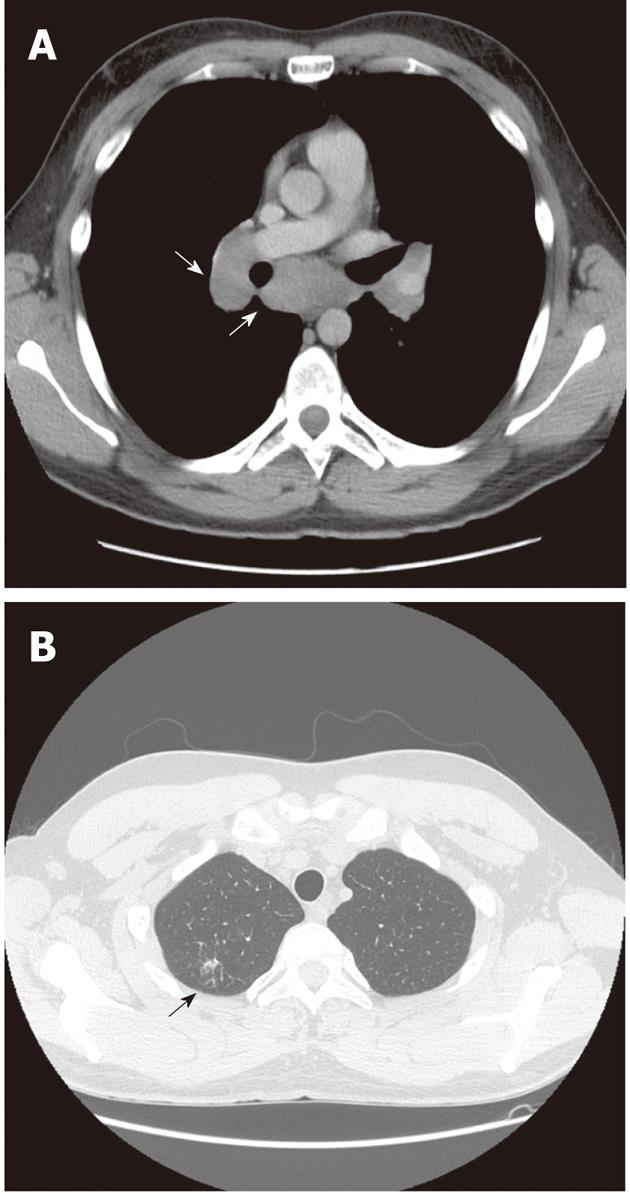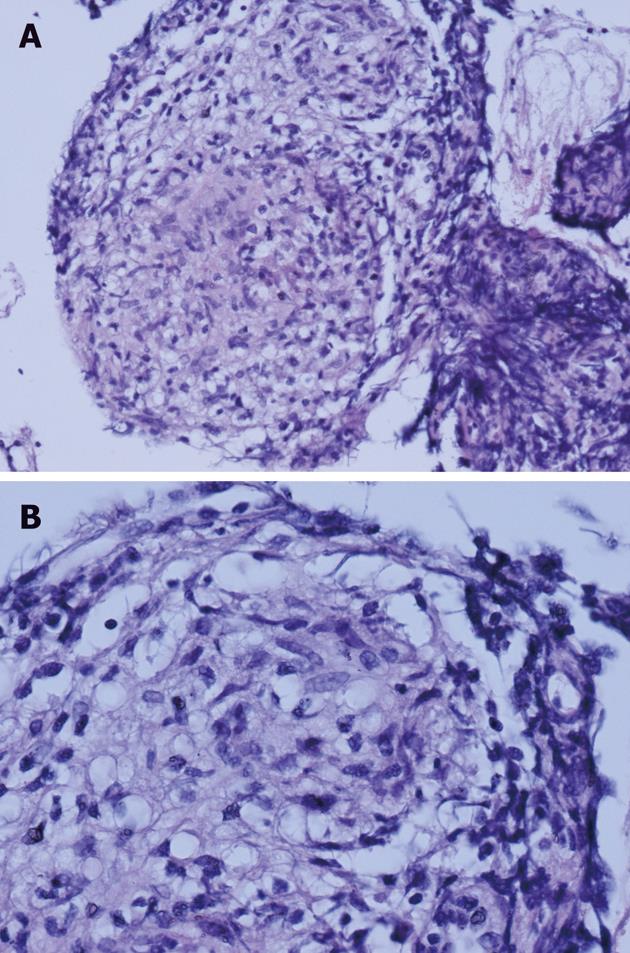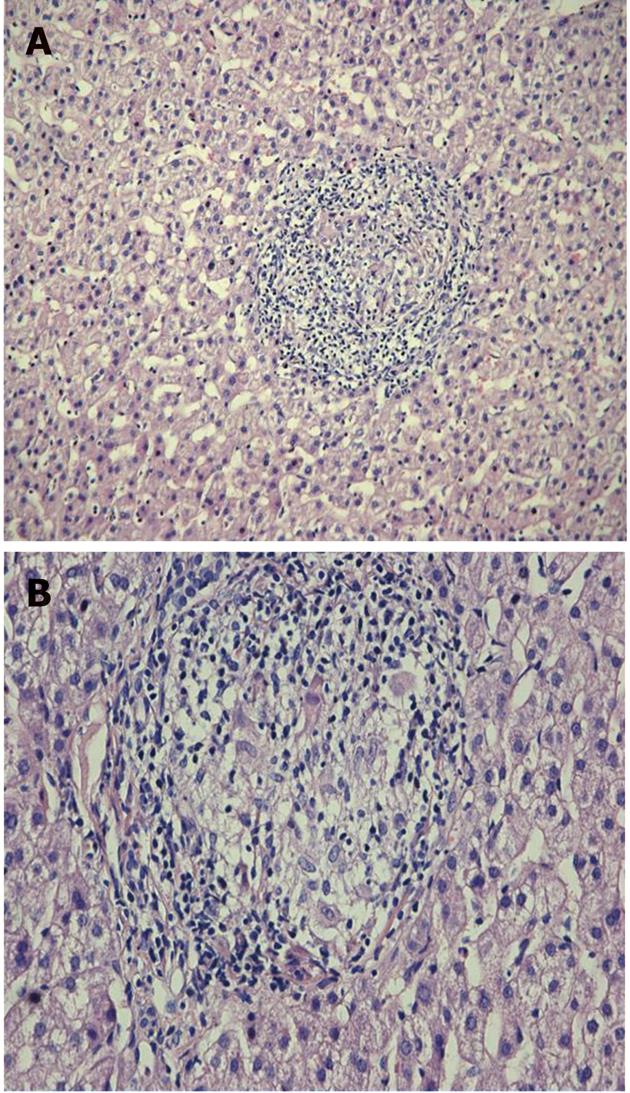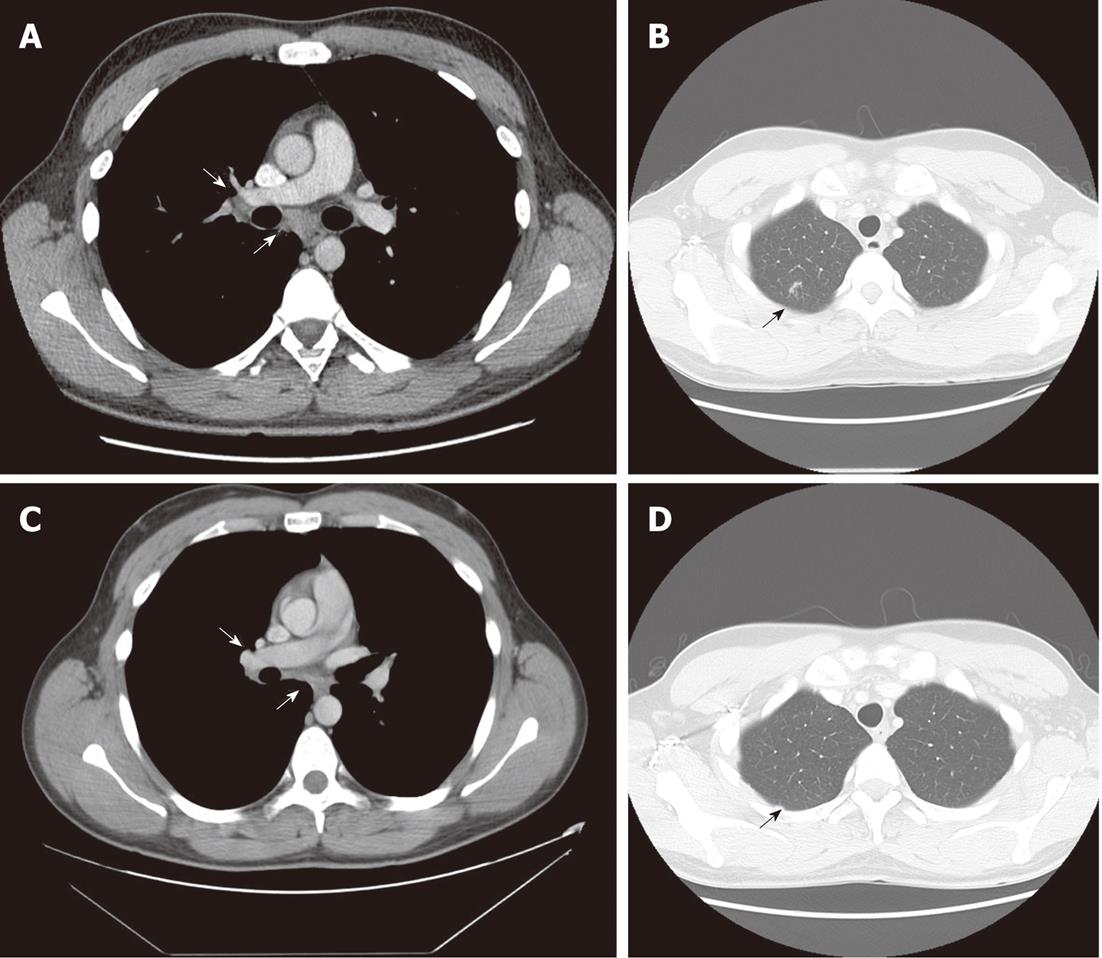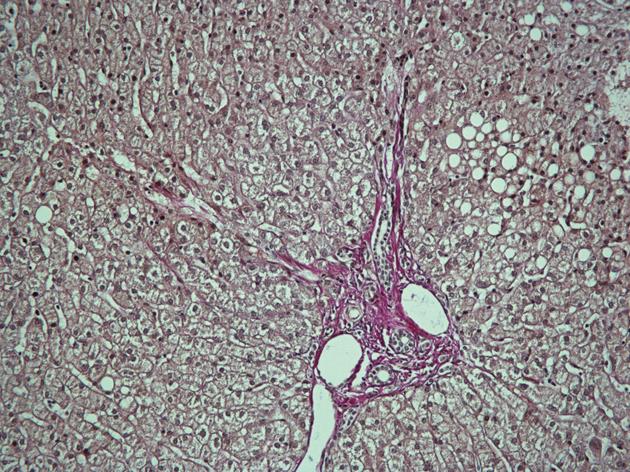Copyright
©2012 Baishideng Publishing Group Co.
World J Gastroenterol. Oct 28, 2012; 18(40): 5816-5820
Published online Oct 28, 2012. doi: 10.3748/wjg.v18.i40.5816
Published online Oct 28, 2012. doi: 10.3748/wjg.v18.i40.5816
Figure 1 Thoracic computer tomographic scans of mediastinal, hilar lymph nodes and pulmonary nodules.
Enlarged lymph nodes (A, white arrows) and small pulmonary nodules in the right upper lobe before prednisolone treatment (B, black arrow; July 2009) are revealed.
Figure 2 Biopsy taken from a pulmonary lymph node.
Two tight naked round well-formed granulomas are surrounded by a small amount of lymphocytic infiltration. The granulomas consist of epithelioid cells; there are no necrosis, giant cells, Shaumann or asteroid bodies. Stained with hematoxylin and eosin, magnification × 200 (A) and × 400 (B).
Figure 3 Liver biopsy revealing a noncaseating granuloma consisting of epithelioid histiocytes and giant cells with a small amount of peripheral lymphocyte infiltration.
Stained with hematoxylin and eosin, magnification ×200 (A) and × 400 (B).
Figure 4 Thoracic computer tomographic scans of mediastinal, hilar lymph nodes and pulmonary nodules.
A significant decrease in size of mediastinal and hilar lymph nodes (A, white arrows) is shown before initiation of antiviral treatment but pulmonary nodules remain at the same levels (B, black arrow; October 2009). At the end of treatment no progression of lymph nodes is revealed (C, white arrows) and pulmonary nodules are absorbed (D, black arrow; December 2010).
Figure 5 Liver biopsy revealing the absence of granuloma formation with vesicles of steatosis.
Stained with van Geason, magnification × 200.
- Citation: Brjalin V, Salupere R, Tefanova V, Prikk K, Lapidus N, Jõeste E. Sarcoidosis and chronic hepatitis C: A case report. World J Gastroenterol 2012; 18(40): 5816-5820
- URL: https://www.wjgnet.com/1007-9327/full/v18/i40/5816.htm
- DOI: https://dx.doi.org/10.3748/wjg.v18.i40.5816









